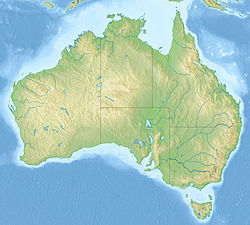| Blackstone Formation | |
|---|---|
| Stratigraphic range: Carnian-Norian ~ | |
| Type | Geological formation |
| Unit of | Ipswich Coal Measures |
| Sub-units | Denmark Hill Insect Bed, Striped Bacon Seam Member |
| Underlies | Unconformity with Raceview Formation and Aberdare Conglomerate |
| Overlies | Tivoli Formation |
| Thickness | 200–240 m (660–790 ft) |
| Lithology | |
| Primary | Shale |
| Other | Siltstone, coal, tuff |
| Location | |
| Coordinates | 27°36′S152°48′E / 27.6°S 152.8°E |
| Approximate paleocoordinates | 58°36′S101°00′E / 58.6°S 101.0°E |
| Region | Ipswich |
| Country | Australia |
| Type section | |
| Named for | Blackstone, Queensland |
The Blackstone Formation is a geologic formation of the Ipswich Coal Measures Group in southeastern Queensland, Australia, dating to the Carnian to Norian stages of the Late Triassic. The shales, siltstones, coal and tuffs were deposited in a lacustrine environment. The Blackstone Formation contains the Denmark Hill Insect Bed.



